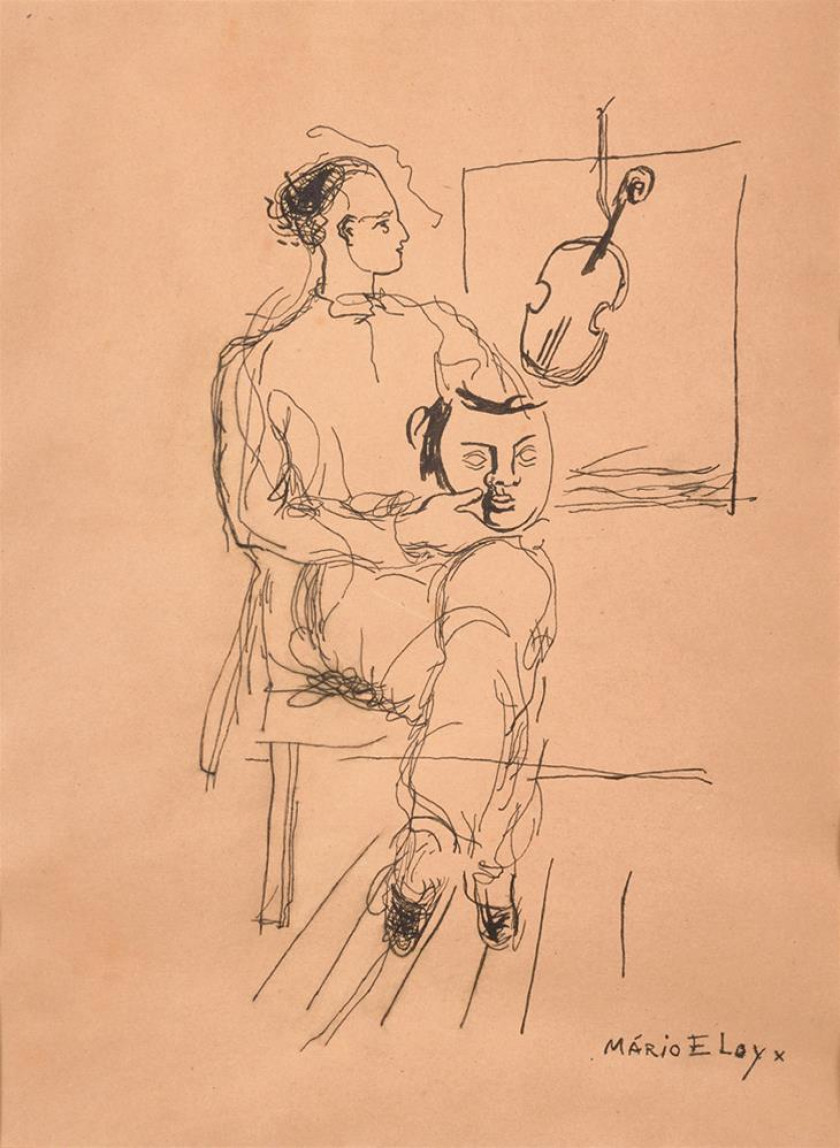Frau mit den roten fischen [Woman with red fish]
painting
![Frau mit den roten fischen [Mulher com peixe vermelho]](https://cms.macam.pt/storage/uploads/thumbs/inarte-work-3956_w840.jpg)
![Frau mit den roten fischen [Mulher com peixe vermelho]](https://cms.macam.pt/storage/uploads/thumbs/inarte-work-3956_w840.jpg)
1931
Oil on canvas
57 x 44 cm
Part of a series of female representations, inspired by the classicizing Picasso (as art historian Maria de Aires Silveira stated in the catalogue of the Retrospective Exhibition of Mário Eloy, held at the National Museum of Contemporary Art, in 1996), this sculptural naked female character occupies the centre of the composition in a way that Eloy defined as plastic and abstract.
This metaphoric approach to the subject, the character of a female fish seller (as we can see by her use of the handkerchief and the folded cloth on her head) suggests a persona focused on her inner self. Simultaneously appropriated by classical tradition and synthesized by modernity, both body and mind (see her gaze) are displayed in a mode of revelation/concealment. Nearby, red fishes rest in a canasta. Behind her, the landscape unfolds. There is a house, and a boat, with folded sails, lays waiting by the water. This flat and green surface goes almost to the top of the composition, leaving only a narrow strip of blue that suggests the sky, in an uncanny representation of the landscape. Indeed, the only signs of landscape representation are provided by the use of the colour and the elements it represents, such as the boat on the horizon.
The background stresses the plasticity (and, in this sense, the abstractionism) of the composition, dividing it into three horizontal stripes of colour, opposing to the horizontality of the figure in the foreground. Once again, only the inclusion of concrete elements, such as the house, the boat on the beach, the other boat on the horizon, and the island on which a flaming sun rises or sets, convey the idea of landscape.
Emília Ferreira
